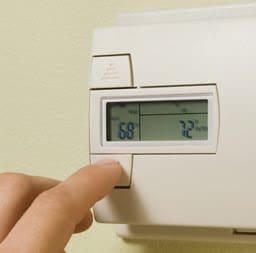 Cut Your Energy Bills Without Cutting Comfort
Cut Your Energy Bills Without Cutting Comfort
There’s nothing better than snuggling up in front of a roaring fire in the middle of a raging snowstorm. (Can you tell I grew up in Chicago?) And while I like to sleep in a freezing cold bedroom at night, not having heat isn’t really an option.
If you don’t like being cold in the winter, you might reach for either a sweater or the thermostat. But there’s no reason to suffer higher energy bills.
Here are some easy ways to cut your energy bills without cutting comfort:
- Learn how to caulk. A tube of caulk costs just a few bucks at your local home-improvement store. Learning how to use it properly takes just a few minutes. But sealing in the warm air while keeping the cold from seeping in can save you as much as 5 to 10 percent on your energy bill.
- Insulate your attic. In many homes, warm air rises right through the roof. By spending $400 to $600 on insulation (depending on the size of your attic or crawlspace), you’ll keep the warm air inside. And here’s a bonus: Adding insulation will also prevent the cool air from seeping out in the summer, keeping your home cooler and making it more energy efficient overall.
- Blow insulation into your walls. What’s good for the roof is great for your walls. If you have walls that aren’t insulated, you can have someone blow insulation into them, greatly increasing your home’s energy efficiency.
- Insulate your hot-water heater. If you keep the tank from cooling off, it will cost less to keep your water hot.
- Clean your furnace. Have a professional clean your furnace once a year or once every other year to keep it running at peak efficiency.
- Close the flue. If you leave the fireplace flue open, warm air will literally run right up and out the chimney. You might as well be burning dollars instead of wood.
- Install storm windows and doors. If you have single-pane windows or a front or back door that doesn’t keep the cold weather out, consider adding storm windows or a storm door to block out the cold air and keep your home warmer.
- Install weather-stripping. In places where caulk won’t work, you might try weather-stripping. Weather-stripping will seal door and window jambs so the cold air can’t get in.
- Turn your thermostat down in the winter and up in the summer. Turning down the thermostat by two degrees in the winter and up two degrees in the summer could lower your energy bill by as much as 10 percent.
Have someone do an energy audit of your house, and you’ll see where your energy dollars are going—and where you might make some additional money-saving improvements.
 Ilyce R. Glink is the author of several books, including 100 Questions Every First-Time Home Buyer Should Ask and Buy, Close, Move In!. She blogs about money and real estate at ThinkGlink.com and at the Home Equity blog for CBS MoneyWatch.
Ilyce R. Glink is the author of several books, including 100 Questions Every First-Time Home Buyer Should Ask and Buy, Close, Move In!. She blogs about money and real estate at ThinkGlink.com and at the Home Equity blog for CBS MoneyWatch.
READ MORE:
Balancing What the Bank Says You Can Afford and What You Can Really Afford
Getting Rid of Debt before Buying a Home
How to Think about Debt When Buying a Home
Strategic Default: The Consequences of Not Paying Your Mortgage
4 Tips for Buying a HUD Home






